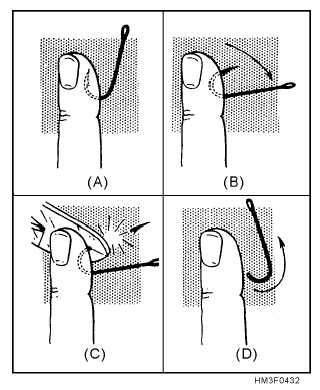thirsty, moisten the mouth with a small amount
of water, but do not allow any liquid to be
swallowed.
Upon the direction of a medical officer, start an
intravenous line.
Crush Injuries
Force can be transmitted from the body's exterior
to its interior structure, leaving the skin intact, with a
simple bruise as the only external evidence of trauma.
This force can cause internal organs to be crushed or to
rupture and bleed. When this happens, it is called a
crush injury. Organs such as the liver and spleen
contain a lot of blood. When crushed, these organs
bleed severely, and this severe internal bleeding can
cause shock. Contents of hollow organs (e.g., urine or
digested food) can leak into the body cavities, causing
severe inflammation and tissue damage. Bones can
also be broken along with muscles, and nerves
damaged. Assessment and treatment for the Hospital
Corpsman can be difficult when a crush injury is
involved. Treat symptomatically and evacuate to the
nearest medical treatment facility as soon as possible.
Removing Foreign Objects
Many wounds contain foreign objects. Wood or
glass splinters, bullets, metal fragments, bits of wire,
fishhooks, nails, tacks, cinders, and small particles
from grinding wheels are examples of the variety of
objects or materials that are sometimes found in
wounds. When such objects are near the surface and
exposed, first aid treatment includes their removal.
However, first aid treatment does not include the
removal of deeply embedded objects, powdered glass,
or any widely scattered material of this nature. You
should never attempt to remove bullets, but you should
try to find out whether the bullet remains in the victim.
Look for both entrance and exit wounds. The general
rule to remember is this: Remove foreign objects from
a wound when you can do so easily and without
causing further damage; but NEVER HUNT FOR OR
ATTEMPT TO REMOVE DEEPLY BURIED OR
W I D E LY
S C AT T E R E D
O B J E C T S
O R
MATERIALS, except in a definitive care environ-
ment.
The following procedure may be used to remove a
small object from the skin or tissues if the object is near
the surface and clearly visible:
1. Cleanse the skin around the object with soap and
water and paint with any available skin
antiseptic solution.
2. If necessary, pierce the skin with a sharp
instrument (a needle, razor, or sharp knife that
has been sterilized by passing it through a flame
several times).
3. Grasping the object at the end, remove it.
Tweezers, small pincers, or forceps may be used
for this purpose. (Whatever instrument you use
should first be sterilized by boiling if at all
possible.)
4. If the wound is superficial, apply gentle pressure
to encourage bleeding.
5. Cover the wound with a dry, sterile dressing.
If the foreign object is under a fingernail or toenail,
you may have to cut a V-shaped notch in the nail so that
the object can be grasped by the forceps. Do not try to
dig the object out from under the nail with a knife or
similar instrument.
A curved or barbed object (such as a fishhook) may
present special problems.
Figure 4-32 shows one
method of removing a fishhook that has become
embedded in the flesh. As you can see from figure
4-32A, the barb on the hook prevents its direct
removal.
However, if you push the hook forward
through the skin, as shown in figure 4-32B, you can
clip off the barb with a wire cutter or similar tool, as
shown in figure 4-32. The remainder of the fishhook
4-40
Figure 4-32.—Removing a fishhook.

